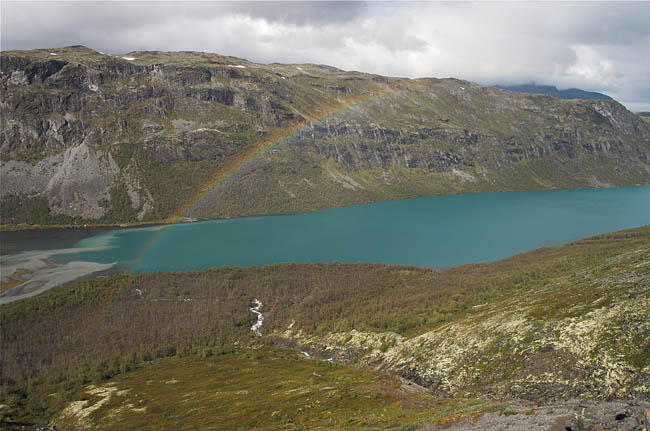Plateau
A small spot on a small lake high above Storådalen served as campground on our way to Memurubu. We had started our tour in Eidsbugarden, passed through Veslådalen and Gjendebu, then climbed up to this point.High above Gjende
The view goes across the Gjende, not visible down in the abyss, at a place called Knutsholet. The map does not name the lake in the foreground, but lists an elevation of 1420 m.



























